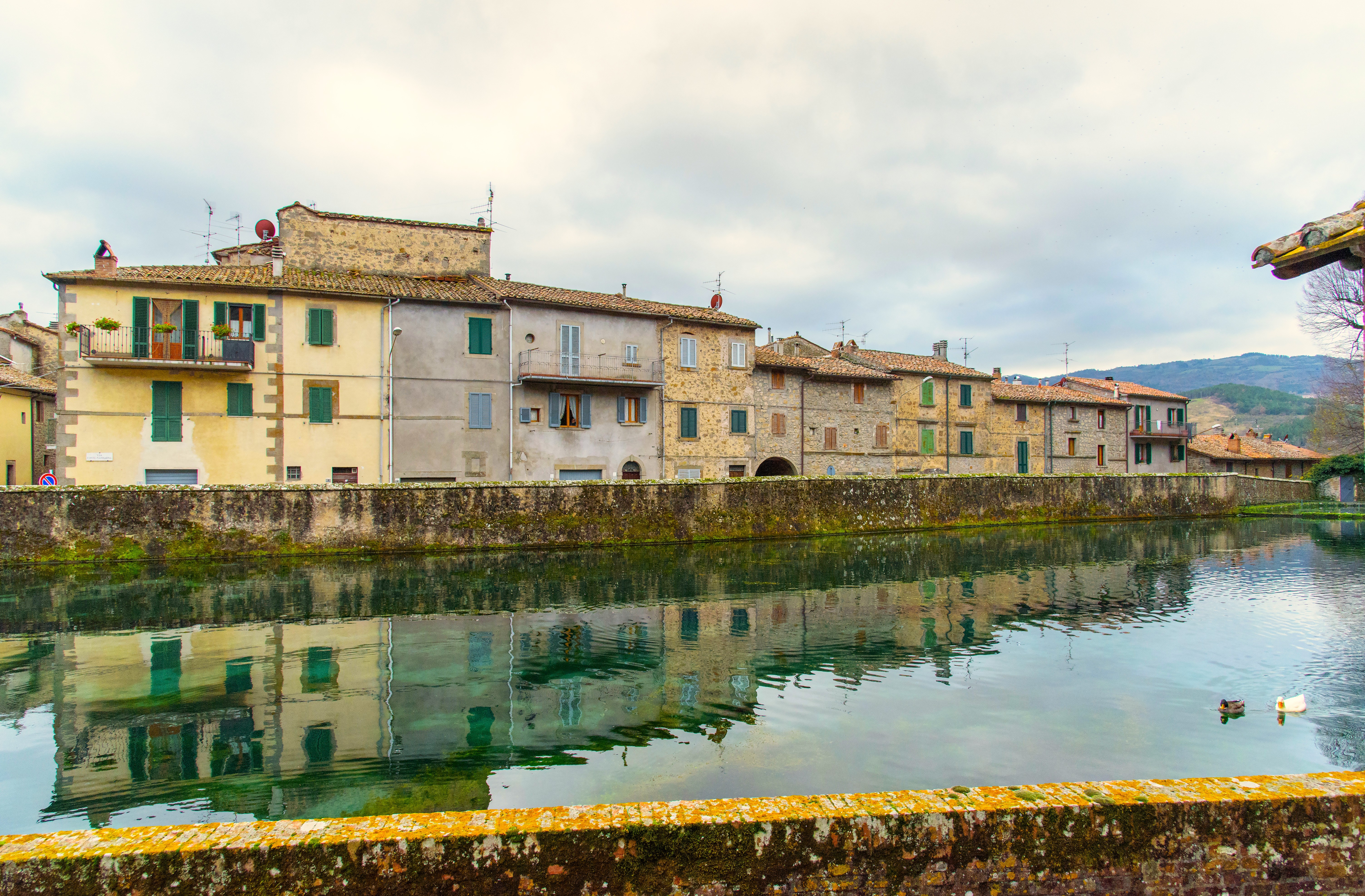Mount Amiata: A Natural and Cultural Treasure
Monte Amiata, an ancient extinct volcano, rises majestically in the heart of southern Tuscany, between the provinces of Siena and Grosseto. With its 1,738-meter elevation, it is the highest mountain in Tuscany and offers a unique blend of nature, traditions, and history, making it an enticing destination for hikers, culture lovers, and food enthusiasts.
Natural Features
Monte Amiata is one of the most distinctive mountains in Tuscany due to its volcanic origins. Its rich biodiversity includes dense forests of beech and chestnut trees that blanket the mountain slopes, providing an ideal habitat for a wide range of animal and plant species. In autumn, the woods are painted in warm shades of orange and red, while in winter, the abundant snowfall makes Amiata a popular destination for skiing and winter activities.
Places to Visit
- Abbadia San Salvatore: This ancient monastic village is one of the most charming spots on Monte Amiata. The Abbey of San Salvatore, founded in the 8th century, is a gem of medieval architecture, surrounded by narrow streets and stone houses that exude an atmosphere of peace and history.
- Santa Fiora: One of the most beautiful villages in Tuscany, Santa Fiora is renowned for its medieval architecture and rich artistic heritage. The Peschiera Park, with its crystal-clear water springs, is a peaceful haven surrounded by greenery.
- Bagni San Filippo: One of the most captivating thermal destinations in the area, known for its natural hot springs. Here, the sulfurous waterfalls, the most famous of which is the "Balena Bianca" (White Whale), create white calcareous formations, offering an almost surreal landscape.
- Pieve di Lamula: A Romanesque church nestled in nature at the foot of the mountain. It is a place of great spiritual and historical charm, with a simplicity that reflects the purity of the surrounding territory.
Activities and Excursions
Monte Amiata offers numerous trails that wind through lush forests and breathtaking views, ideal for hikers and cyclists. The Monte Amiata Wildlife Park is home to native species and provides nature trails suitable for families and nature enthusiasts.
During winter, the Monte Amiata ski resort becomes one of the most frequented destinations for Tuscan skiers, with both alpine and Nordic ski slopes, as well as snowshoeing routes through snow-covered woods.
Traditions and Gastronomy
The local traditions of Monte Amiata are deeply rooted in rural and agricultural life. The Chestnut Festival, held annually in various villages in the area, celebrates the chestnut, a symbol of the mountain and the foundation of the local economy for centuries. This fruit is still used today to prepare typical dishes such as castagnaccio (a chestnut cake), soups, and roasted chestnuts.
The cuisine of Amiata reflects the resources of the land, featuring dishes based on game, porcini mushrooms, truffles, and dairy products. Wine is another local excellence, with numerous wineries offering tastings of Montecucco DOC, one of the region’s finest wines.
Culture and Spirituality
In addition to its natural beauty, Monte Amiata is also a place of deep spirituality. In addition to the aforementioned monastery of Abbadia San Salvatore, the area is home to ancient hermitages and churches that bear witness to the long history of devotion and meditation that has characterized the region.
Monte Amiata is an ideal destination for those seeking a blend of nature, history, culture, and culinary traditions. Its peaceful and authentic atmosphere, combined with the beauty of its landscapes and the richness of its traditions, makes this mountain a unique place to explore in every season.


 English
English Italiano
Italiano Deutsch
Deutsch Français
Français